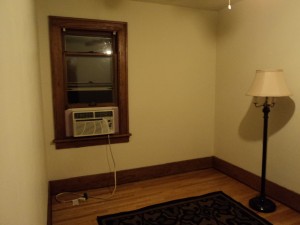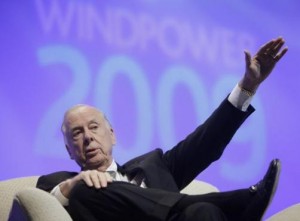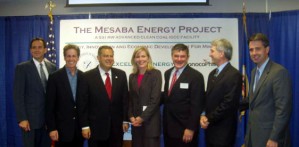Why is Keystone XL pipeline special?
August 30th, 2011
595 arrested so far… There’s been a lot online about opposition to the Keystone XL pipeline for Tar Sands oil.
TAR SANDS ACTION
I’m looking at all of this and I’m wondering where the resistance was to the MinnCan pipeline, just one of our own tar sands crude oil pipeline through Minnesota. Why is the Keystone XL pipeline project special? Why are people waking up about tar sands pipelines? Is it because Keystone XL is a “Presidential Permit” project at the Dept. of State?
MPIRG helped some of the landowners affected by MinnCan organize after they got very late notice they were potentially affected, but they lost bigtime, were denied intervention status by the ALJ because they were “late,” and then after it was permitted, booted out of the Appellate Court because they were not formal intervenors. As they were in condemnation court for the pipeline, they got notice that they were targeted for CapX 2020 transmission. At that point they became dyed-in-the-wool activists and joined with NoCapX 2020 as intervenors, in the Certificate of Need case and subsequent routing dockets for CapX transmission across Minnesota, right now in the Hampton-LaCrosse CapX 2020 routing docket .
For more info, here’s the MinnCan routing docket at PUC:
http://energyfacilities.puc.state.mn.us/Docket.html?Id=18339
Here is a link to a post with the Appellate decision:
Appellate court affirms PUC in pipeline appeal
Here are county maps, from Clearwater Co. down to the refinery in Dakota County:
http://energyfacilities.puc.state.mn.us/resource.html?Id=19000
And the Certificate of Need, go hear and search for docket “06-02” (year-docket no.)
Here’re some other tar sands pipelines in Minnesota, completed:
The “Alberta Clipper” pipeline project:
http://energyfacilities.puc.state.mn.us/Docket.html?Id=19203
And another Enbridge “Southern Lights” oil pipeline project
http://energyfacilities.puc.state.mn.us/Docket.html?Id=19133
New office almost ready…
August 29th, 2011
I’ve been busy, glad for the state shutdown and a pause in a couple of big cases… and then there’s the time needed to recover from huffin’ the stripper, mineral spirits, and finish. Tearing up the upstairs rugs is what got me laryngitis from dust, mold, cat piss, and whatever — NEVER AGAIN!!! And special thanks to Billy & Steve for the beautiful job on the floors, what a difference! More Before and Afters as we get it done, kitchen is next. But first, back to work, gotta pay for all this somehow!
Before – Isn’t this blue, more darker blue and purple oppressive? The whole house was like that, serious depression issues, no doubt! Living room is so dark green that we need lights 24/7, not a workable premise, anyway, here’s the BEFORE:
AFTER:
What’s left? I still have to strip the ugly flat purple paint off the quarterround, finish it and nail it in, but that’s less than a day’s work, and then haul the auction-procured furniture in, and move in box after box after box after box after box of utility permit crap, good thing most of it goes in a BIG closet in the other room, and good thing I’m not hauling it all over (though I am doing major winnowing) (don’t worry, Xcel, I’m not tossing out all your smoking guns!). Note the Summer-grrrrrrl spec’d “Black & Tan” plastic area rug, just have to toss it out the door and hose it off on the roof.
Kitchen before:
So far, it’s scraped and patched, almost ready to get rid of MORE awful blue, begging for a light yellow to perk it up, and that big area on the right, that former island cabinet is gone, replaced by two 1920’s base units, cleaned up, sanded, buffed and restored exterior and ready to paint the insides and screw together, and a nice 8 foot long butcher block counter on top, with some “Julia” pegboard and pot rack above.
Front bedroom in progress:
SURPRISE – MORE AND DIFFERENT SHADES OF BLUE!!!! The wall in the photo on the left is now a big archway into the “nursery” (yeah, right, we sure need that!) to open it up and the oppressive dark blue is lightening up, whew, it was so awful in there. The carpet and padding is torn out and fueling the Red Wing incinerator (AAAAAAAGH!), all the thousands of nails and staples are out, the floors are sanded and finished, the walls are now antique white, and the woodwork is in the process of being stripped, but that job will suck, not nearly as easy as in that back room.
AWA Goodhue PUC Order is out!
August 24th, 2011
The T. Boone Pickens wind project in Goodhue County, masquerading as a “C-BED” project now has a formal permit issued by the Public Utilities Commission. It’s LONG, and will take some serious study:
Next? Motion for Reconsideration – probably by ALL parties!
Responses to Excelsior Energy articles in DNT
August 24th, 2011
For background on this Excelsior Energy scam known as the Mesaba Energy Project, just search on that link and here on Legalectric for Excelsior, Mesaba, gasification, boondoggle, etc.!!!!
If you search their site, what is most noticeable is the changes, lots is missing, for example, on their “About Us” page, their “Our Team” is missing a lot of people. Here’s what it used to say:
| Excelsior Energy | |
Excelsior’s executive team has significant utility and power plant experience including all of the following aspects of large energy projects, planning, development, engineering, financing, permitting, construction and operation.
Executive Team Julie Jorgensen Co-President and CEO Thomas Micheletti Co-President and CEO Thomas Osteraas Senior Vice President and General Counsel Dick Stone Senior Vice President, Development and Engineering Robert Evans Vice President, Environmental Affairs Kathi Micheletti Vice President, Government Relations William Ruzynski Vice President, Development Mary Day Controller
Additional Senior Personnel
The following senior industry experts work with Excelsior Energy on a regular basis
Stephen Sherner Sherner Power Consulting Bruce Browers Browers Consulting
It’s just a remnant of its former self.
Anyway, the Duluth News Tribune articles were published:
Millions in public money spent, but Iron Range power plant still just a dream
Iron Range energy project seeks lifeline in more funding, new fuel source
… and then came some responses, first from the paper’s editors standing up against this boondoggle (finally!), and then from Julie and Tom:
Published August 23, 2011, 12:02 AM
Our view: Taxpayers have right to answers on Excelsior
What happened to our more than $40 million?Even then, what was reported often was incomplete.
And, perhaps most pressing of all to taxpayers, what happened to our more than $40 million?
Here’s what Julie Jorgensen and Tom Micheletti had to say in response:
Published August 24, 2011, 12:00 AM
In response: Excelsior Energy project is an important energy option for state
By: Julie Jorgensen and Tom Micheletti, Duluth News TribuneThe Mesaba Energy Project, under development by Excelsior Energy, is a unique public/
We at Excelsior Energy take our obligations under our
The project is nearing the end of this complex governmental-
Julie Jorgensen and Tom Micheletti are co-CEOs of Excelsior Energy Inc.
Duluth News Tribune on Excelsior Energy scams
August 24th, 2011
For years and years, I represented mncoalgasplant.com opposing this wretched boondoggle of a pipe-dream of “clean” and “green.”
The project lingers on, on life-support, and pulling the plug is long overdue.
The good news is that the Duluth News Tribune is finally paying attention, and looking into the financial irregularities. Duluth News articles are here, and next will be some responses.
It started with an article in Duluth News Tribune, first in a series, the second below:
Published August 21, 2011, 09:40 AM
Millions in public money spent, but Iron Range power plant still just a dream
By: Peter Passi, Duluth News Tribune
Yet Micheletti said he’s stopped making predictions as to when Excelsior will build its first plant.
How much more pay Micheletti and Jorgensen have received since 2006 has not been publicly disclosed.
Part II of the Duluth News Tribune series on Excelsior Energy:
Published August 22, 2011, 12:30 AM
Iron Range energy project seeks lifeline in more funding, new fuel source
By: Peter Passi, Duluth News Tribune
* EARLIER: Millions in public money spent, but Iron Range power plant still just a dream
Gone are state funds, including:
# $10 million from the Minnesota Renewable Development Fund.
“We’ve got staying power to see our way through this,” he said.
Sen. Tom Bakk, D-Cook, supported Excelsior’s request.
“There’s much less risk from an investor standpoint,” he said.
But Anzelc said Excelsior still lacks one essential: a customer.
“To my knowledge, no on in the power business is supportive of this project,” he said.
Even the revamped natural gas plant plan could be a tough sell, however.
Minnesota Power’s Mullen described what he considers “a flat market” for power generation,
But he’s not counting Excelsior out.
“You have to give them credit for their tenacity,” Mullen said.












